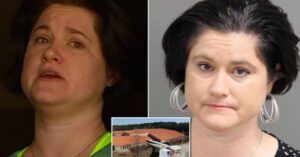For the first time since 1974, properties across Sussex County will be assessed for tax purposes.
Sussex County Council voted 5-0 April 13 to settle with plaintiffs who filed the lawsuit against all three counties in Delaware in an effort to secure more money and better teachers for struggling school districts. In 2018, the National Association for the Advancement of Colored People-DE and Delawareans for Educational Opportunity, which represent about 20 parents and community leaders, filed a lawsuit stating outdated property values penalize students in low-income areas because students receive less educational funding and opportunities than students who live in wealthier school districts.
“We can’t continue to spend taxpayer money on a losing cause,” said District 3 Councilman Mark Schaeffer
In a statement released by Sussex County Council, the settlement lays the groundwork for the county to move forward on a general reassessment of all properties. Assessments would be completed in time for tax bills to be issued in the latter half of 2024.
“This is not a decision today that we take lightly, nor is it one that we frankly welcome. This will have real implications for every property owner in Sussex County and across the state,” said County Council President Mike Vincent. “Unfortunately, the court did not rule in our favor, and while we may disagree with the outcome that now ties our collective hands, the reality is our options moving forward were limited. We believe settling this case today will avoid any further costly legal battles, and that this step is ultimately in the best interest of the taxpayers we serve.”
The settlement will be finalized with the litigants, and filed with the court, in the coming days, according to County Administrator Todd Lawson. Once complete, the county will begin the evaluation of vendors to perform its first general reassessment since 1974. County officials expect to select a vendor later this spring from proposals submitted last month.
Under terms of the settlement, the process – expected to cost an estimated $9 million, with funding coming from county reserves – will begin later this year, and conclude by mid-2024. All properties, whether undeveloped or with improvements, will be evaluated and recalculated based on current industry-accepted methodologies to produce new assessments that will reflect their true value in money, a requirement under Delaware law cited by the court in its decision.
Assessments, combined with a governing jurisdiction’s property tax rate, are part of the formula used to determine individual tax bills that property owners receive each year. Bills include taxes for both county and local independent school districts. Delaware law requires Sussex County to bill property owners for school taxes on behalf of the local districts, with those funds then turned over to the state. About 10 percent of the typical residential tax bill in Sussex County is for county property taxes; the remaining 90 percent is for local schools.
County officials will provide additional updates as the reassessment process commences later this year. Information will be posted at the county’s website at sussexcountyde.gov/assessment.
Chancery Court decision
In May 2020, Chancery Court Vice Chancellor J. Travis Laster found that New Castle, Kent and Sussex are in violation of state law that requires assessing property at its true value – the True Value Statute. The statute also requires that taxes should be uniform within the territorial limits of the authority levying the tax, known as the Uniformity Clause.
All three counties have used decades-old property assessment to calculate their tax bases. Sussex County uses assessments dating back to 1974; New Castle County last reassessed property in 1983; and Kent County in 1987. Both Kent and New Castle counties settled with the plaintiffs in February.
“Making matters worse, two of the three counties do not even use their full base-year valuations. Sussex County uses 50 percent of its base-year valuations. Kent County uses 60 percent,” Laster wrote in his Chancery Court decision. “The NAACP-DE and the DEO proved that assessing properties using base-year valuations from three and four decades ago – much less using 50 percent or 60 percent of those valuations – is not the same as assessing properties at their present fair market value.”
Taking into consideration that only half of a decades-old property assessment is used to determine property value in Sussex County, the decision states, property assessment today is based on about 8 percent of 2020 fair market value. And in some cases, the decision states, Sussex County could be using property values from at least 1970 if a property did not exist in 1974.
“The record in this case does not reveal how much prior to 1974, but a reference in a Delaware Supreme Court decision suggests that the general assessment used a valuation date in 1970,” the decision states. “It is thus likely that Sussex County actually assesses property at 50 percent of its value in 1970. The earlier date makes Sussex County’s assessments even more stale and further undermines its system of taxation for purposes of the True Value Statute and the Uniformity Clause.”
But that’s not all.
Not only are today’s property values based on a percentage of 46-year-old or older assessments, the lawsuit states, low-value properties have a relatively greater tax burden than more expensive real estate. “With one exception (commercial property in Delmar) … higher-value properties are assessed at a lower percentage of fair market value than lower-value properties. Under this regressive system, owners of lower-value properties bear a greater relative share of the tax burden,” the decision states.





